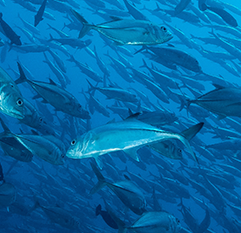DEEP 40 Part of a Solid Foundation

SEPTEMBER SPECIALS SCUBA diving to 40 meters (approximately 130 feet) deep is no simple matter… well, getting down is easy, but fixing things so that the way back up is uneventful, takes some care. RAID’s Deep 40 program will introduce students to the careful planning and additional skills that make diving to the limit of the recreational dive tables, fun, enjoyable, and as safe as possible. Here are some important guidelines for diving at this depth which the DEEP 40 program follows: 1. Academics and Skills Coaching: This makes sure students execute the open water dives with the mindset, equipment, techniques, and background understanding to keep them at their peak. All this help to ensure that the whole Deep 40 experience is a comfortable and effective learning adventure. 2. Planning Your Dive: Deep 40 students will build a detailed dive plan, including entry and exit points, duration, and maximum depth. They will use dive tables and a dive computer to calculate no-decompression limits and safety stops. And discuss the plan with their dive team to be certain that everyone understands their role and is confident to play their part. 3. Gas Management: As divers venture deeper, gas consumption increases. A critical part of this program is detailed gas calculations for a safe bottom time, ascent, and safety stop. (Deep 40 students have the option to use use nitrox or a suitable helium-based gas. 4. Equipment: This course will introduce students to the concept of detailed pre-dive checks, and using equipment rated for deep diving. This includes a reliable dive computer or depth gauge, dual gauges for redundancy, and appropriate exposure protection (wetsuit or drysuit). And of course, regulators suitable for deep diving. 5. Environmental Concerns: There are increased potential hazards at this depth, such as cold water temperatures, strong currents, and reduced visibility. There is often different and more fragile species of marine life as a diver travels deeper and each of these poses potential risks but added responsibilities. 6. Buddy System: At any depth, following the buddy system is important, but certainly below 20 metres, its importance become more critical. Always dive with a buddy for safety. Be as sure as possibe that both divers are aware of the dive plan and can assist each other in case of an emergency. 7. Emergency Preparedness: An important part of the equipment package for deeper diving is a surface marker buoy (SMB) to signal your ascent and make your location visible to boats, and dive team members (support) on the surface. It also pays to have a clear plan in case of emergencies, including a communication plan and access to first aid or oxygen. 8. Post-Dive Considerations: After diving to these depths, avoid flying or ascending to altitudes for at least 24 hours to minimize the risk of decompression sickness. Monitor your health after the dive and seek medical attention if you experience any unusual symptoms. Diving to 40 meters can be a rewarding experience offering stunning underwater sights, but proper training, planning, and safety measures are crucial. Always respect your limits and those of your diving partner. And signup for a RAID Deep 40 program to ensure a fun and safe dive. (PLEASE NOTE: Deco 40 has been updated as of November, 2024. See NITROX PLUS.

